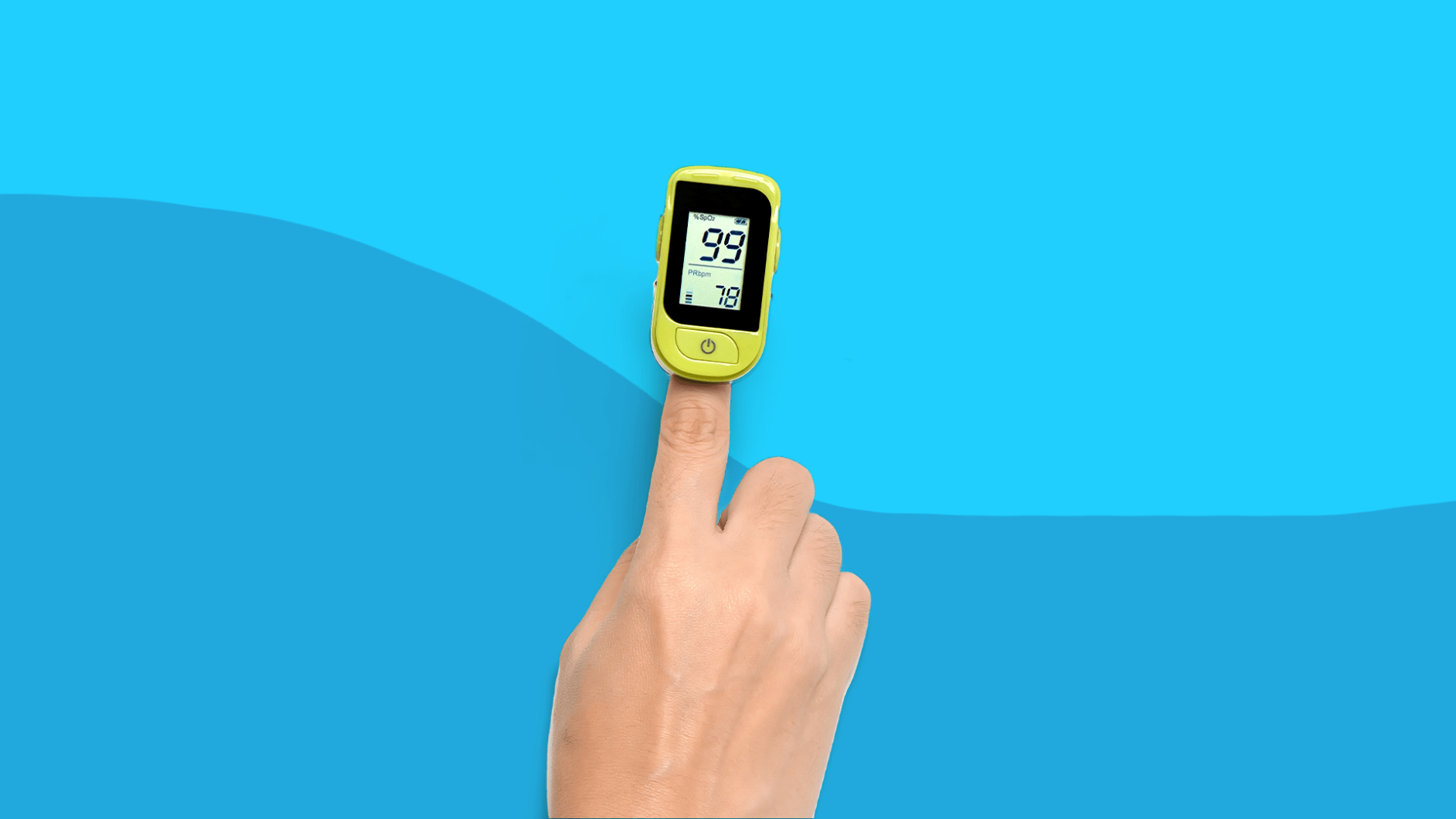When the COVID-19 pandemic hit earlier this year, many people were left scrambling to refresh their first aid kits, ensuring they had everything they needed—just in case. As items like thermometers and Kleenex sold out nationwide, another little-known medical gadget began gaining attention: the pulse oximeter.
Patients with histories of respiratory illness, such as pneumonia or chronic obstructive pulmonary disease (COPD), are likely familiar with the clamp-like monitor that detects oxygen saturation levels in the blood. And though pulse oximeters are typically used in a medical setting, many manufacturers also make versions for at-home use.
But do you really need a pulse oximeter for your own first aid kit? Here’s what you need to know about the device if you’ve been thinking about purchasing one.
What is a pulse oximeter?
A pulse oximeter is a small monitor placed on the fingertip (or sometimes the earlobe) that measures the amount of oxygen in your blood. It does so non-invasively (meaning there’s no need for a needle poke and blood draw). Essentially, the device works by measuring light and color, says Aloke Chakravarti, MD, a pulmonologist at Mount Sinai Hospital in New York.
“It’s shining an LED light through the nail bed and it’s detecting a pulsatile flow,” he explains. “Basically it’s trying to detect the blood flow through the artery. And then as it does that, it measures the changes in absorption of the light. It is an estimate of how much of that blood has oxygen attached to the hemoglobin molecule. It is an estimate of an estimate.”
The resulting readout displays your heart rate (pulse) in beats per minute, the level of oxygen saturation in a percentage, and what’s called plethysmography, which is a visual representation of the pulse rate itself. A “normal” pulse-ox reading, according to Dr. Chakravarti, is between 95% and 100%.
“Below 90% is when we can start to worry the lungs are not oxygenating the blood effectively enough,” adds Andrew J. Sauer, MD, a cardiologist, and heart failure therapies innovator in Kansas City, Missouri.
How to use a pulse oximeter
While there is no “right” or “wrong” finger to put the pulse oximeter on, says Dr. Chakravarti, you do want to make sure it’s one that doesn’t have nail polish or artificial nails (which block the monitor’s LED light) and one that isn’t particularly cold (which would indicate poor circulation and could prevent an accurate reading). You’ll also want to be sitting still while using the device and watch the plethysmography to make sure it is, in fact, picking up your pulse. Once you’ve confirmed that, you can then read the blood oxygen saturation.
Who needs a pulse oximeter? Should I get one?
Historically, pulse oximetry has typically been conducted in a hospital or doctor’s office in order to monitor patients with respiratory illnesses, such as pneumonia, COPD, or lung elasticity issues. Rarely has it been recommended for home use (even for people with chronic lung diseases). That changed with coronavirus (COVID-19).
“This is something new,” says Dr. Chakravarti. “The reason why this recommendation was put in place was during the height of the pandemic, there were no hospital beds and the emergency rooms were overflowing. People were diagnosed with COVID and then sent home. The purpose of the pulse oximeter was nothing more than to be an early warning of oxygen saturation dropping.”
Some COVID-19 patients were unable to detect low oxygen levels on their own due to a phenomenon called “happy hypoxemia,” during which patients don’t experience expected symptoms such as shortness of breath. In situations like this, a pulse oximeter could provide vital feedback.
Dr. Chakravarti stresses that patients with COVID-19 should consult with their healthcare provider about whether an at-home pulse oximeter is right for them:
“It’s a conversation between you and 1) the doctor who has seen you in the hospital and is saying you’re okay to go home and 2) the doctor who is going to follow you in the outpatient setting. Both need to be comfortable that it’s reasonable for you to go home and use this and that this early warning system is right for you.”
You should also develop a plan of action with your healthcare provider for what to do if your blood oxygen levels drop dangerously low (e.g., if your level drops to 93%, go to the emergency room, stat). After all, the reading is only as useful as your (and your provider’s) response to it.
For people without COVID-19 or other relevant medical conditions, many medical professionals don’t recommend an at-home pulse oximeter.
“Generally speaking, for most patients, this is not worth buying,” Dr. Sauer says.
How to save on fingertip pulse oximeters
Pulse oximeters range in price based on the number of bells and whistles. The cheapest ones are usually around $16 to $20, with high-end ones—boasting features like Bluetooth compatibility—topping out at a few hundred dollars. Drug stores and pharmacies like CVS, Walmart, and Walgreens carry them, as does Amazon (which has a number of options in the high teens and low twenties dollar range). Check with your insurance to see if at-home pulse oximeters are covered by your insurance. Either way, you can use an HSA or FSA to pay for it.
You may be able to save money on a pulse oximeter by using your SingleCare card. SingleCare is not a form of insurance, but rather a prescription discount card free for all U.S. pharmacy customers. Simply search the SingleCare site for discounts on pulse oximeters, ask your doctor to write you a script for it, and then present your card to the pharmacist when you drop off the prescription to receive those savings.











